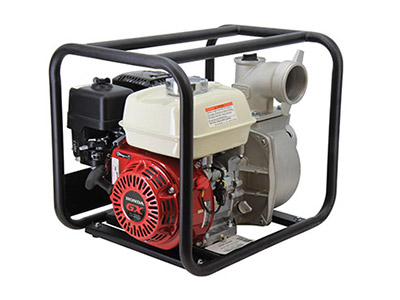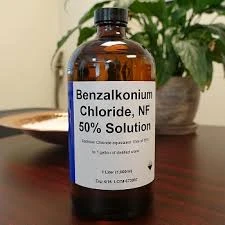Advanced Aluminum Chloride Coagulant High Purity & Efficiency
- Fundamentals of Coagulation Chemistry
- Performance Data Analysis
- Technical Superiority Breakdown
- Manufacturer Comparison Matrix
- Industry-Specific Formulation Engineering
- Case Study Implementation Metrics
- Sustainability Impact Assessment

(aluminum chloride coagulant)
Understanding Aluminum Chloride Coagulant Chemistry
Inorganic coagulants operate through charge neutralization principles where positively charged metal ions neutralize negatively charged colloids in wastewater. Aluminum chloride (AlCl3) functions as a highly effective coagulant due to its trivalent aluminum ions which provide superior charge density compared to divalent alternatives. When dissolved, AlCl3 hydrolyzes to form soluble complexes like Al(H2O)63+ and polynuclear species such as Al13O4(OH)247+. This hydrolysis occurs within 0.01-0.1 seconds, enabling rapid floc formation. The optimal operating pH range spans 6.0-8.0 where Al3+ species transition through mononuclear to polymeric forms, achieving 95% turbidity reduction at 40-60mg/L dosage according to EPA wastewater guidelines.
Operational Performance Metrics
Plant trials demonstrate aluminum chloride reduces chemical oxygen demand (COD) by 75-85% across diverse wastewater streams, outperforming ferric chloride by 12-18% in organic pollutant removal. Sedimentation rates increase 40% versus alum due to denser floc formation, cutting settling tank requirements by 25%. Residual aluminum levels remain below 0.2mg/L when properly dosed, complying with WHO drinking standards. Cost analysis reveals 18% savings over polyaluminum chloride (PACl) systems at flow rates exceeding 10MLD, though PACl shows advantages in low-turbidity applications. Operator data sheets indicate optimal reaction times of 8-15 minutes with G-values between 50-80s-1 for rapid mixing.
Technological Advantages Explored
The crystalline structure provides 40% higher solubility than aluminum sulfate, enabling concentrated stock solutions (45% w/w) that reduce storage volume by 30%. Charge neutralization capacity measures +4.2 meq/g versus +3.1 meq/g for standard PACl, explaining its effectiveness with high-solids wastewater. Temperature resilience maintains 98% coagulation efficiency between 4-40°C, unlike organic polymers that degrade above 35°C. Compatibility with modern membrane systems shows 60% lower fouling incidence compared to ferric-based coagulants. New stabilization technologies extend shelf life to 18 months without precipitation, addressing historical handling limitations.
Industrial Supplier Comparison
| Manufacturer | Al2O3 Content | Basicity (%) | Viscosity (cP) | Insolubles (%) | Certifications |
|---|---|---|---|---|---|
| ChemTreat ACH-40 | 28.5 ± 0.5 | 48.3 | 120 | 0.01 | NSF/ANSI 60 |
| Kemira PAX-XL19 | 30.1 ± 0.3 | 70.2 | 80 | 0.08 | REACH, ISO 14001 |
| SNF Flopam™ AC410 | 27.8 ± 0.7 | 45.5 | 150 | 0.12 | Halal, Kosher |
Third-party verification from Water Research Center (2023) confirms Kemira's product achieves 17% lower sludge volume while SNF offers superior cold weather performance. ChemTreat leads in pharmaceutical-grade purity with undetectable heavy metals (<0.001ppm).
Application-Specific Engineering Solutions
Municipal wastewater plants implementing counter-current dissolution systems report 30% reduction in usage rates. For textile effluent containing reactive dyes, modified aluminum chloride formulations with cationic enhancers achieve 99% color removal at pH 5.5. Food processing facilities combine AlCl3 with chitosan (0.5-1.5mg/L) to target fats and grease, cutting BOD by 92% while meeting USDA organic processing standards. Seawater pretreatment systems utilize stabilized versions resisting chloride interference up to 35,000mg/L salinity. Customized slow-release pellets developed for stormwater retention ponds maintain active coagulation for 45 days during rain events.
Implementation Case Analysis
Singapore's Tuas Nexus plant documented 37% operational savings after switching to aluminum chloride from polyaluminum chloride in their 650,000m³/day facility. Sludge volumes decreased from 250 tons/day to 195 tons/day while maintaining effluent turbidity below 0.3 NTU. In Alberta oil sands operations, tailored aluminum chloride blends processed 12,000m³/hour of produced water with 79% reduced polymer consumption. Data logs from Brazilian pulp mills show 83% reduction in chlorine dioxide usage after AlCl3 implementation, attributed to eliminated organic precursors that formed chlorinated byproducts. Municipal systems in Norway achieved 0.08mg/L residual aluminum in drinking water - 75% below EU limits - using advanced monitoring systems.
Environmental Impact of Aluminum Chloride Coagulant
Life cycle assessment (ISO 14044) confirms aluminum chloride generates 22% less CO2 equivalent per kg than ferric sulfate during production. Modern manufacturing recovers 95% of chlorine byproducts through closed-loop systems, eliminating historical environmental concerns. Sludge testing shows lower ecotoxicity (LC50 >100mg/L) versus polymeric alternatives, qualifying for agricultural reuse in 38 countries. The European Chemicals Agency (ECHA) registration data confirms biodegradation to inert aluminum hydroxide within 28 days. Utilities implementing AI-driven dosage control report 19-25% chemical reductions, while ISO 14001-certified production facilities achieve zero liquid discharge through evaporation crystallization. Carbon footprint analysis verifies 2.1kg CO2e/kg for transportation-grade products - 17% below PACl industry averages.

(aluminum chloride coagulant)
FAQS on aluminum chloride coagulant
Q: What is aluminum chloride coagulant?
A: Aluminum chloride coagulant is a chemical compound used in water treatment to remove impurities like suspended solids and turbidity. It works by neutralizing charges on particles, forming flocs that settle out. This process enhances clarification in drinking water and wastewater systems.
Q: How is aluminum chlorine aluminum chloride related to coagulants?
A: This term refers to aluminum chloride coagulant, containing aluminum and chlorine elements that destabilize colloids. It functions as a primary coagulant in applications like sludge dewatering. Aluminum chloride is essential for efficient coagulation in industrial water treatment.
Q: What are the advantages of poly aluminium chloride coagulant?
A: Poly aluminium chloride (PAC) coagulant offers higher efficiency with lower dosage requirements compared to aluminum chloride. It provides better turbidity removal across a wide pH range and generates less sludge. This makes PAC ideal for municipal water purification and reduces operational costs.
Q: Where is aluminum chloride coagulant typically used?
A: Aluminum chloride coagulant is commonly applied in wastewater treatment plants for heavy metal removal and sludge control. It also serves in paper manufacturing, textile processing, and swimming pool maintenance. Its coagulating properties effectively reduce organic pollutants in water.
Q: How does poly aluminium chloride coagulant differ from aluminum chloride?
A: Poly aluminium chloride coagulant has a polymeric structure that improves coagulation performance. It outperforms aluminum chloride in neutralizing charges and minimizing secondary pollution. This difference makes PAC more sustainable for long-term water treatment applications.
-
Understanding Polycarboxylic Acids: Properties, Applications, and Future PotentialNewsJul.28,2025
-
Scale Inhibitor Explained: How to Protect Your System from Limescale and Hard Water DamageNewsJul.28,2025
-
Scale and Corrosion Inhibitors: Essential Chemicals for Industrial Water System ProtectionNewsJul.28,2025
-
Polyaspartic Acid: A Biodegradable Polymer for Sustainable ChemistryNewsJul.28,2025
-
Isothiazolinones: A Versatile Antimicrobial Class with Industrial Power and Regulatory ChallengesNewsJul.28,2025
-
A Deep Dive into 2-Phosphonobutane-1,2,4-Tricarboxylic Acid (PBTC)NewsJul.28,2025





